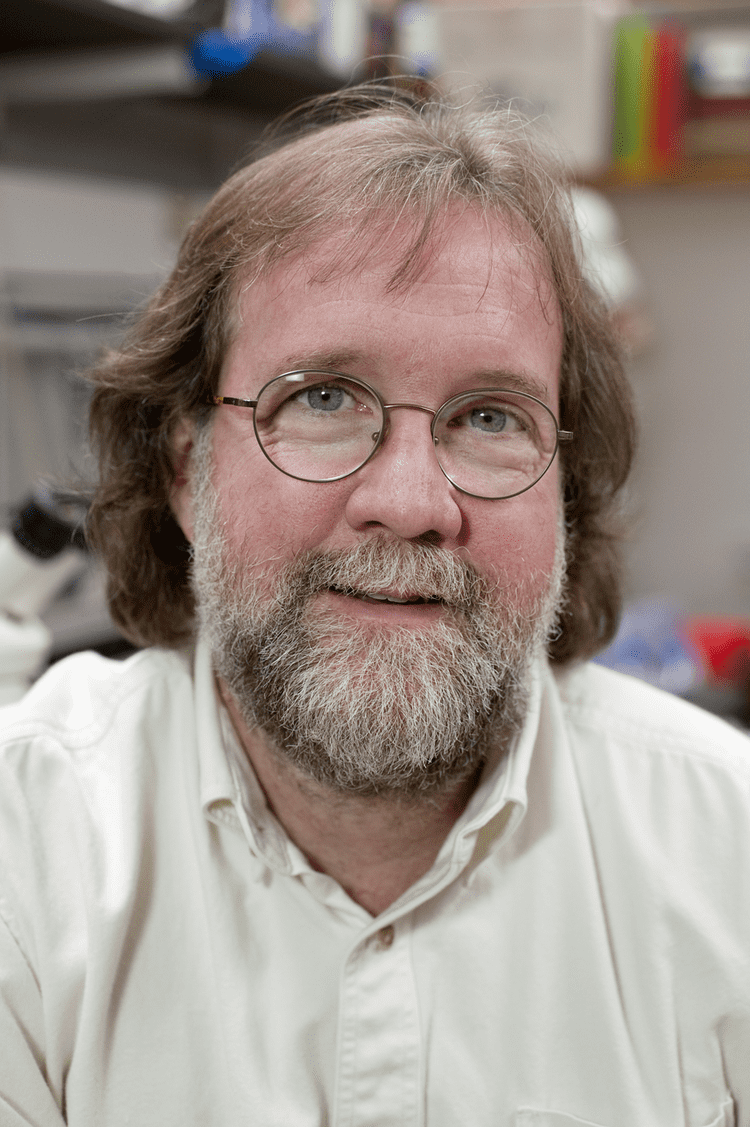Citizenship American Role Professor Name Sean Carroll | ||
 | ||
Institutions University of Wisconsin–Madison, University of Colorado at Boulder Notable awards Presidential Young Investigator AwardBenjamin Franklin Medal in Life Science Fields Evolutionary developmental biology People also search for Sean M. Carroll, Jacques Monod, B. David Stollar Nominations National Book Award for Nonfiction Books Endless Forms Most Beautiful, The Making of the Fittest, Brave Genius: A Scientist, Remarkable Creatures: Epic Adv, Into the Jungle: Great Adv | ||
Doctoral advisor B. David Stollar | ||
Sean b carroll at nobel conference 50
Sean B. Carroll (born September 17, 1960) is a biologist, author, educator and executive producer. He is the Allan Wilson Professor of Molecular Biology and Genetics at the University of Wisconsin–Madison. His studies focus on the evolution of cis-regulatory elements in the regulation of gene expression in the context of biological development, using Drosophila as a model system. He is a member of the National Academy of Sciences, of the American Academy of Arts and Sciences and the American Association for Advancement of Science, as well as a Howard Hughes Medical Institute investigator.
Contents
- Sean b carroll at nobel conference 50
- Year of darwin sean b carroll
- Biography
- Career
- Books
- Lectures and presentations
- Magazine articles
- Reception
- References
Year of darwin sean b carroll
Biography
Carroll was born in Toledo, Ohio. He has stated that, as a kid, he would flip over rocks looking for snakes, and at age 11 or 12, he started keeping snakes. This activity led him to notice the patterns on the snakes and wonder how those form.
Carroll got his B.A. in Biology at Washington University in St. Louis, his Ph.D. in immunology from Tufts University and did post-doctoral work at the University of Colorado Boulder.
Career
Carroll is at the forefront of a field known as evolutionary developmental biology (also known as "evo-devo"), studying how gene changes control the evolution of body parts and patterns. He is the Allan Wilson Professor of Molecular Biology and Genetics at the University of Wisconsin–Madison, and an investigator for the Howard Hughes Medical Institute.
In 1987, Carroll set up a laboratory at the University of Wisconsin-Madison "focused on understanding how genes get used in different ways to generate the diversity of form that we see". The Laboratory of Cell and Molecular Biology lists Carroll's interests as "Genetic control of body pattern in fruit flies, butterflies, and other animals".
Carroll's team has shown, in a series of papers, how the activation of genes during the embryonic stages of the Drosophila fruit fly control the development of its wings, and has been searching for the butterfly's counterparts of these genes.
In 1989, he received the Shaw Scientist Award from the Greater Milwaukee Foundation.
In 2006, Carroll was interviewed by PBS as part of the NOVA documentary "Family That Walks on All Fours", about a family in Turkey that has members who walk on their hands and feet. In this interview, he discusses the possible genetic underpinnings of this family's condition.
From September 2009 to March 2013, he wrote a column for The New York Times called "Remarkable Creatures", where he would discuss findings in animal evolution.
In 2010, he was named vice-president for science education of the Howard Hughes Medical Institute. In 2011, the HHMI launched a documentary film initiative to produce science features for television, to which Carroll was appointed as one of the executive producers. In 2012, one such film, called The Day the Mesozoic Died, retracing the investigation that led to the discovery of the asteroid collision that triggered the mass extinction at the end of that Era, was introduced by Carroll at a National Teacher's Conference.
In 2010, Carroll received the Stephen Jay Gould Prize from the Society for the Study of Evolution. In 2012, he was awarded the Benjamin Franklin Medal in Life Science from the Franklin Institute "for proposing and demonstrating that the diversity and multiplicity of animal life is largely due to the different ways that the same genes are regulated rather than to mutation of the genes themselves." In 2016, he was awarded the Lewis Thomas Prize at the Rockefeller University.
Books
Lectures and presentations
Magazine articles
Reception
Science writer Peter Forbes, writing in The Guardian, calls Endless Forms Most Beautiful an "essential book" and its author "both a distinguished scientist ... and one of our great science writers." In Forbes's view, in The Serengeti Rules Carroll "manages to unite natural history with the hard science of genomics."
Louise S. Mead, reviewing The Making of the Fittest for the National Center for Science Education, notes that Carroll provides "some of the overwhelming evidence for evolution provided in DNA", using different lines of inquiry such as DNA sequences that code for genes no longer in use, and evidence of evolutionary change. Mead notes that evolutionary theory has predictive power, as with icefish whose ancestors had haemoglobin, but no longer needing it in icy water, they have lost it.
Douglas H. Erwin, reviewing Endless Forms Most Beautiful for Artificial Life, remarks that life forms from Drosophila to man have far fewer genes than many biologists expected – in man's case, only some 20,000, which is about the same as a fly. He notes the "astonishing morphological diversity" of animals coming from "such a limited number of genes". He praises Carroll's "insightful and enthusiastic" style, writing in a "witty and engaging" way, pulling the reader into the complexities of Hox and PAX-6, as well as celebrating the Cambrian explosion of life forms, and much else.
